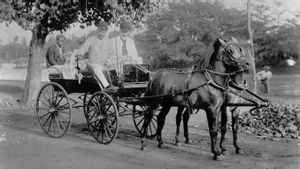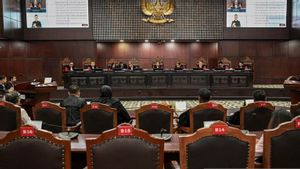JAKARTA - On December 27, 1845, a doctor named Crawford W. Long gave his wife ether as an anesthetic during childbirth. This is the first time that ether has been used in labour.
To quote the Smithsonian Magazine, when Long did this, he was already using ether on a friend to surgically remove a cyst on his neck. However, the public is skeptical of the idea of making people pass out during surgery. So Long stopped using ether in his clinic. He also did not provide a record of his experience with anesthesia until 1850.
"But Long still believed in the importance of anesthesia and administered ether to his wife during the birth of his second child in 1845 and subsequent deliveries, thereby undoubtedly becoming a pioneer in labor analgesia," said anesthesiologist Almiro dos Reis Júnior in his research.
Later in life, Long tried to gain credit for pioneering surgical anesthesia, a controversial claim that historians have not acknowledged until recently. But she did not seek admission for obstetric anaesthesia.
"In fact, the use of ether with his wife was one year earlier than the Scottish physician, James Y. Simpson, who is known to have used the first obstetric anesthetic," says historian Roger K. Thomas.

Instead of Long, Scottish obstetrician James Young Simpson is noted for being the first to introduce the use of ether and chloroform anesthetics for childbirth.
James Young Simpson first used anesthesia for labor in 1847. This was about two years after Long used ether for labor for the first time and a year after dentist William Morton's first public demonstration of ether anesthesia at Massachusetts General Hospital.
Anesthesia historyEarly anesthesia can be traced back to ancient times, but one of the first European records is in the 1200s, when Theodoric of Lucca, an Italian physician and bishop, "used a sponge soaked with opium and mandragora to relieve pain during surgery," according to History of the British Anesthesia Society (www.histansoc.org.uk/). Hashish and Indian hemp are also commonly used as painkillers.
Until the mid-1800s, however, surgeons did not want to make patients addicted to painkillers. In the end they only used alcohol or bullets to bite into the excruciating pain of surgery.
The British daily newspaper described treatment during the US Civil War as a terrible ordeal. "A variety of saws, knives and sharp hooks were used to carry out much-needed operations for the wounded fighters," the newspaper wrote in 2011.

“But instead of being comfortably sedated, the soldiers had to grind their teeth into cavities. feel the pain of having their limbs amputated."
According to records from the University of Medicine and Health Sciences, modern anesthesia was first used by dentist William Morton and surgeon John Warren on October 16, 1846. Anesthesia was administered at Massachusetts General Hospital in Boston.
Morton used ether sulfate to anesthetize a man who needed surgery to remove a vascular tumor from his neck. Surgeon John Warren performed the procedure on a patient named Glenn Abbott.
Some historical accounts state that Morton hoped to make a lot of money from his "discovery." But he encountered many obstacles before and after. In 1845 or one year before the first successful operation using anesthesia, Morton and his fellow dentist, Horace Wells, experimented with nitrous oxide (laughing gas).
During a demonstration at Harvard Medical School in 1845, the two dentists failed to relieve pain from a subject whose tooth was extracted. This caused great humiliation for the two doctors.
*Read other information about TODAY's HISTORY or read other interesting articles from Putri Ainur Islam.
TODAY'S HISTORY MoreThe English, Chinese, Japanese, Arabic, and French versions are automatically generated by the AI. So there may still be inaccuracies in translating, please always see Indonesian as our main language. (system supported by DigitalSiber.id)









